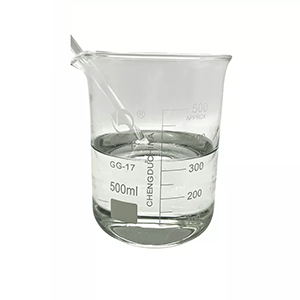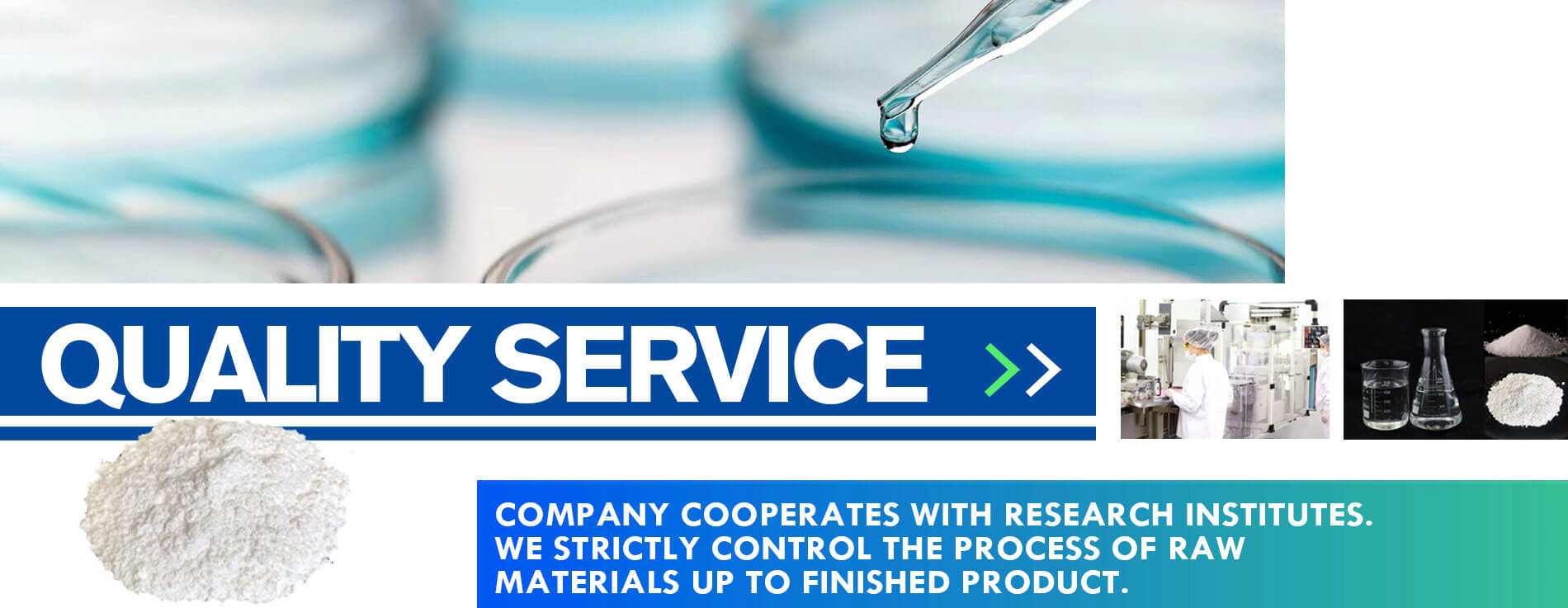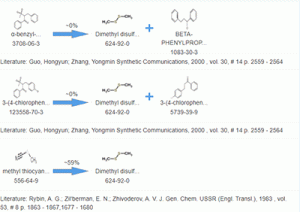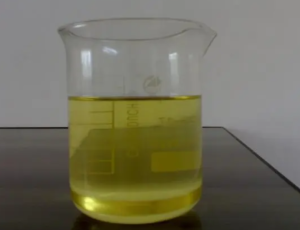Dimethyl Disulfide

Specifications
Dimethyl disulfide (DMDS) is an organic sulfur compound with the molecular formula (CH₃)₂S₂, exhibiting distinctive chemical and physical properties. In terms of chemical characteristics, DMDS is a highly volatile liquid, flammable, and soluble in various organic solvents. It possesses strong reducing properties, serving as a sulfur source in numerous organic synthesis reactions. DMDS is also an effective dehydrogenating agent, employed in hydrogen production. Additionally, it forms complexes with several metals, displaying excellent coordination capabilities.
Regarding physical properties, DMDS has a melting point of -85°C and a boiling point of 127°C. It exists as a clear, colorless liquid with a pungent odor in the air. Due to its polar molecular structure, DMDS is liquid at room temperature but may solidify at lower temperatures. With its unique attributes, dimethyl disulfide finds widespread applications in organic synthesis, agriculture, and the chemical industry.
| Item | Index | ||||
| PURITY % | 99.5 MIN | ||||
| COLOR(APHA) | 120MAX | ||||
| METHYL MERCAPTAN % | 0.05 MAX | ||||
| DIMETHYL SULFIDE % | 0.1 MAX | ||||
| WATER CONTENT % | 0.06 MAX | ||||
| DENSITY % | 1.062 | ||||
| SULPHUR CONTENT % | 67.5-68.1 | ||||
Packing & Storage
| Packing | In 200kg net UN-approved iron drum, 1000kg IBC, 24-25m3 ISO-Tank |
| Storage | 20℃, 1-2 years. |
| Shipping | Room temperature in China; may vary elsewhere |
Free Quote
For samples, pricing, or more information, please call us at 0086 25 51192301 or mail to info@ascent-chem.com or fill out the following form.
We will respond to you as soon as possible.
Tel: 0086 25 51192301
E-mail: info@ascent-chem.com



General Information
| Common Names | Dimethyl sulfide| Methyl Disulphide | ||||||
| Structure | |||||||
| CAS No. | 624-92-0 | Boiling Point (℃) | 109.7±0.0 °C | ||||
| Molecular Weight | 94.199 | Melting Point (℃) | -85 °C | ||||
| Appearance | Colorless or light yellow liquid | Vapor Specific Gravity | 1.1±0.1 g/cm3 | ||||
| HS Code | 2930909099 | Flash Point (℃) | 24.4±0.0 °C | ||||
| Solubility | Autoignition Temperature (℃) | ||||||
| Safety Phrases | S26-S61-S45-S38-S36/37/39-S28A-S16-S60 | ||
| RIDADR | UN 2381 3/PG 2 | ||
| WGK Germany | 1 | ||
| Packaging Group | II | ||
| Hazard Class | 3 | ||
| SYMPTOMS | PREVENTION | FIRST AID | |
| Inhalation | Cough. Sore throat. | Use local exhaust or breathing protection. | Fresh air, rest. |
| Skin | Redness. Burning sensation. Itching. | Protective gloves. | Remove contaminated clothes. Rinse and then wash skin with water and soap. |
| Eyes | Redness. Pain. | Wear safety goggles. | First rinse with plenty of water for several minutes (remove contact lenses if easily possible), then refer for medical attention. |
| Ingestion | Abdominal pain. Nausea. Vomiting. | Do not eat, drink, or smoke during work. Wash hands before eating. | Rinse mouth. Induce vomiting (ONLY IN CONSCIOUS PERSONS!). Refer for medical attention . |

Frequently Asked Questions
Q: How do you store DMDS Dimethyl Disulfide?
A: Store this substance in an airtight container in a cool, dry place. Humidity and moisture should be avoid. Keep far away from oxidizing agents, reducing agents, and never store it with strong alkalis.
Q: Security terms?
Keep the container in a well-ventilated place.
Keep it away from sources of ignition and no smoking.
In case of contact with your eyes, rinse your eyes immediately with plenty of water and seek medical advice.
In case of skin contact, rinse the contact point with plenty of water immediately.
Do not discharge into the sewer.

Take precautionary measures against static discharges.
Wear suitable protective clothing, gloves, protection goggle, and face protection.
Wear suitable respiratory equipment in case of insufficient ventilation.
In case of accident or feeling unwell, seek medical advice immediately and show the label if possible.
This material and its container must be disposed of as hazardous waste.
Avoid release it to the environment. Refer to special instructions.
If swallowed, do not induce vomiting, you need to seek medical advice immediately and show this container or label.
Q: Risk terms?
A: It is highly flammable and, harmful to swallow, very toxic by inhalation, and it is irritating to eyes, respiratory system and skin. Toxic to aquatic organisms which may cause long-term adverse effects in the aquatic environment.
Q:In what areas is dimethyl disulfide used?
A:Organic Synthesis: DMDS is widely employed in diverse organic synthesis reactions, serving as an effective dehydrogenating agent and sulfur source. Its role as a dehydrogenating agent facilitates reactions involving alcohols, ketones, and other compounds, leading to the formation of unsaturated compounds. Additionally, DMDS, as a sulfur source, participates in sulfuration reactions, expanding the scope of organic synthesis.
Agriculture: In agriculture, DMDS functions as a soil fumigant. Introducing DMDS to the soil effectively suppresses fungi, bacteria, and parasites, reducing the occurrence of diseases and enhancing soil fertility. This application contributes to sustainable agricultural practices and ensures food safety.
Chemical Industry: DMDS plays a multifaceted role in the chemical industry. It serves as an additive for metal surface treatment, forming complexes with metals to improve corrosion resistance and mechanical properties. Furthermore, DMDS acts as an additive in lubricating oils, enhancing lubrication and extending the lifespan of mechanical equipment.
Rubber Industry: In rubber processing, DMDS serves as a sulfurizing agent, participating in the cross-linking reactions of rubber to improve hardness, wear resistance, and aging properties. This is crucial for the production of high-quality rubber products such as tires and seals.
Petroleum Industry: DMDS, as a sulfurization catalyst, is widely applied in the petroleum industry. It participates in processes like reforming and cracking, contributing to the improvement of fuel octane rating and antioxidant properties, optimizing the quality of petroleum products.
Biological Research: Due to its impact on biological systems, DMDS is utilized in specific experiments and studies within the field of biology, aiding in the exploration of the mechanisms of action on cells and biomolecules.
In summary, DMDS’s multifunctionality positions it as a crucial component in various industries and scientific research, providing robust support for a range of applications.

